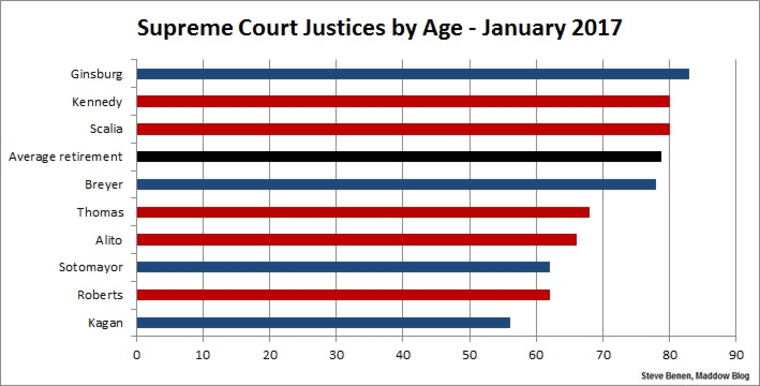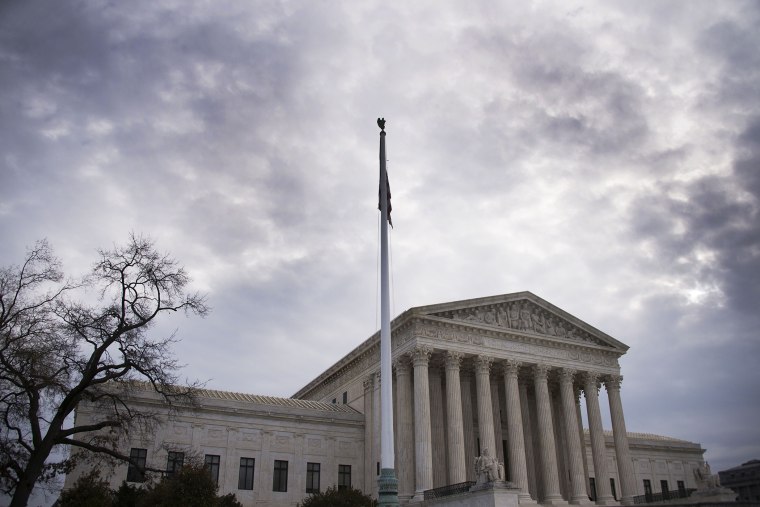About a month ago, Ted Cruz was campaigning in Iowa, where a voter asked the Texas senator about the Supreme Court.
"One more liberal justice and our right to keep and bear arms is taken away from us by an activist court," Cruz said. "One more liberal justice and they begin sandblasting and bulldozing veterans memorials throughout this country. One more liberal justice and we lose our sovereignty to the United Nations and the World Court."
None of these dire warnings were rooted in reality in any way, but they were nevertheless a reminder of the significance of the high court as a 2016 campaign issue. MSNBC's Irin Carmon explained late last week that Republicans, arguably more than Democrats, are acting as if the Supreme Court itself is "essentially on the ballot."
Former Pennsylvania Sen. Rick Santorum has said, "The stakes are too high and the issue too important to simply cede the will of the people to five unaccountable justices." Former Arkansas Gov. Mike Huckabee has long complained of politicians who would "allow black-robed and unelected judges the power to make law as well as enforce it." For Republicans running for president, the Supreme Court itself is essentially on the ballot. Democrats? Not so much. [...] Democrats have shown little of the intensity or emphasis shown by the Republicans. That isn't lost on the liberal activists who are focused on the judiciary and outraged by many of the Supreme Court's recent decisions.
To be sure, Election Day is over 11 months away, and we can't yet say with certainty which issues will ultimately define the cycle. Democrats are no doubt aware of the court's future -- at a Hillary Clinton event in Massachusetts over the weekend, a speaker reminded the audience, "We are one justice away..." -- and the party may yet turn the spotlight on the rare opportunity at the heart of next year's election.
But it's not unreasonable to think Democrats have good reasons to focus on the court with the same zeal as their Republican counterparts.
Let's turn again to this chart I put together in May.

As we discussed at the time, if we assume that the current court does not change for the remainder of the Obama presidency – and really, no one can even say that for sure – three justices will be at least 80 by Inauguration Day 2017. Justice Ruth Bader Ginsburg will be 83. (In the above chart, blue lines refer to justices appointed by Democratic presidents; red lines refer to justices appointed by Republican presidents.)
This is no small detail: as a recent Bloomberg Politics piece noted, "The average retirement age for a U.S. Supreme Court justice is 78.7, a 2006 study in the Harvard Journal of Law and Public Policy found."
The day the next president takes office, three sitting justices will already be well past this average, while a fourth will be very close behind. (Justice Stephen Breyer will be 78.2 years old on the next Inauguration Day.)
Given the circumstances, it's hard not to notice the fact that the next president will have an extraordinary opportunity to shape the court's future and quite possibly much of American public life for a generation.
